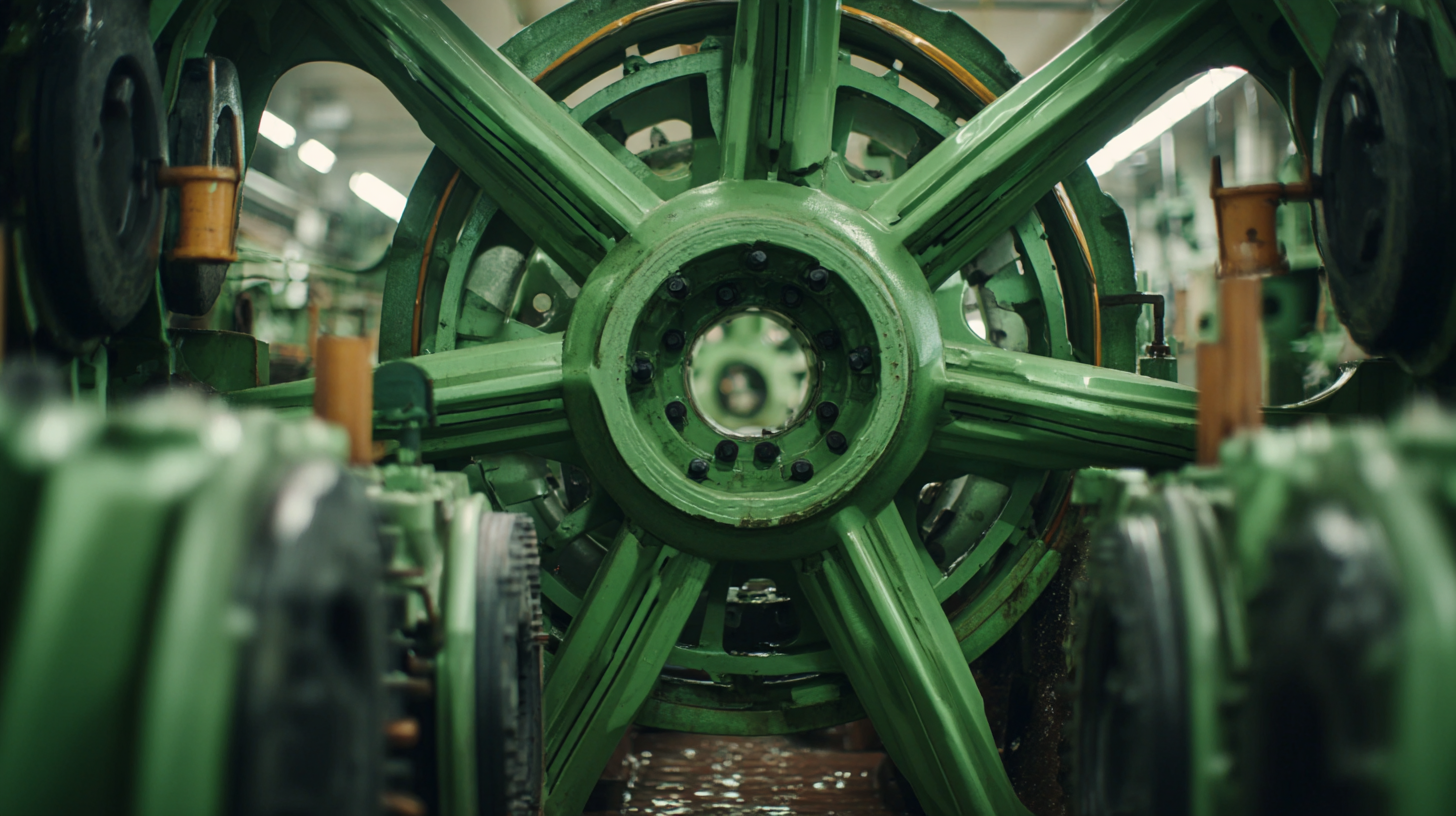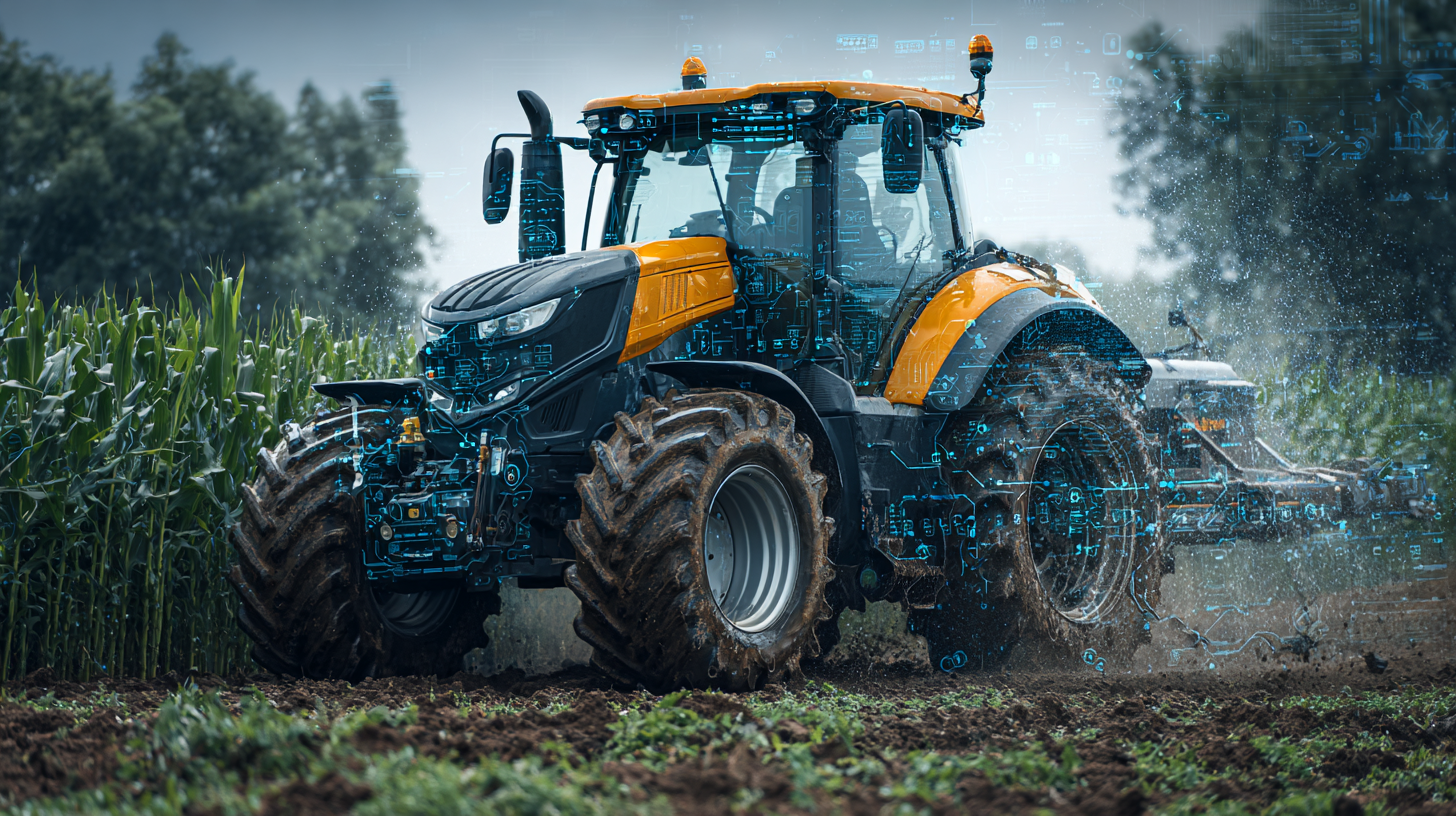In the rapidly evolving agricultural sector, the demand for efficient and innovative machinery is surging, driving interest in specialized components such as Agricultural Machinery Molds. According to a recent report by the International Journal of Agricultural Engineering, the global market for agricultural machinery is projected to reach $170 billion by 2025, underscoring the significance of high-quality molds in the manufacturing process.

These molds play a critical role in shaping robust and reliable equipment, which directly impacts productivity on farms. As the agricultural industry increasingly relies on automation and advanced technology, understanding the unique features and diverse applications of the best Agricultural Machinery Molds becomes essential for global buyers seeking to enhance their operations and stay competitive in a dynamic marketplace.
This comprehensive guide aims to provide insights into these molds, detailing their design considerations, material selections, and contributions to modern agriculture.
The agricultural machinery mold industry plays a pivotal role in shaping the future of farming technology. As per a recent report from MarketsandMarkets, the global agricultural equipment market is projected to reach USD 240 billion by 2027, driven largely by demand for advanced machinery equipped with precision molds. These molds are increasingly designed to meet specific technical specifications that enhance efficiency, durability, and adaptability for various agricultural tasks.
One of the key technical specifications to consider in agricultural machinery molds includes material strength and heat resistance, as molds must withstand high temperatures and intense mechanical stresses. For instance, metal molds made from alloys like nickel-chromium can offer superior performance in terms of longevity and resistance to wear, as highlighted by the International Journal of Advanced Manufacturing Technology. Additionally, the precision of the mold design, often measured in micrometers, is critical for ensuring the quality of the final product, directly impacting the overall productivity of farming operations.
As global buyers seek out the best agricultural machinery molds, understanding these specifications will not only facilitate better purchasing decisions but also contribute to enhanced agricultural productivity and sustainability in an increasingly competitive market. According to the Food and Agriculture Organization (FAO), enhancing machinery efficiency could potentially boost crop yields by up to 30%, making the choice of suitable molds a vital consideration for agribusinesses worldwide.
Agricultural machinery molds come in various types, each designed to meet specific needs in the farming industry. For instance, injection molds are commonly used to create plastic components for machinery, such as seeders and planters. These molds allow for high precision and the production of complex shapes, which can significantly enhance the efficiency and effectiveness of agricultural equipment. Additionally, metal casting molds are essential for producing durability-focused parts, such as engine components and transmission housings, ensuring that the machinery can withstand tough farming conditions.
Another important type of agricultural machinery mold is the blow mold, which is ideal for creating hollow plastic items like fertilizer tanks and water containers. These molds offer a lightweight yet sturdy option for various agricultural applications. Furthermore, rotational molds are used for large, hollow items and are particularly beneficial for creating tanks and other storage solutions that require uniform wall thickness. Understanding the unique capabilities of each mold type allows global buyers to make informed decisions, ensuring they select the most appropriate machinery molds for their specific agricultural needs.
Choosing the right mold for your agricultural machinery needs can be a daunting task, especially with the plethora of options available in the market. The first step in this process is to assess your specific requirements based on the type of crops you cultivate and the machinery you use. Consider factors such as the mold's durability, ease of maintenance, and compatibility with existing equipment. Researching manufacturers that specialize in agricultural molds can provide valuable insights into which designs are most effective for your operations.

Next, quality should be your top priority. Look for molds made from high-grade materials that can withstand harsh agricultural environments. It’s essential to evaluate the mold's performance history, including user reviews and ratings, to ensure reliability and efficiency. Additionally, consulting with industry experts or peers can provide further guidance on making an informed choice. By following these steps, you can find a mold that not only meets your immediate needs but also enhances your agricultural productivity for years to come.
Maintaining agricultural machinery molds is essential for ensuring their longevity and optimal performance. Regular maintenance not only prevents costly repairs but also enhances the quality of your agricultural production. One critical tip is to perform routine inspections. Checking for signs of wear and tear, such as cracks or corrosion, allows for timely repairs that can extend the life of your molds. Additionally, keeping molds clean and free from debris can significantly reduce the risk of damage during operation.
Another important aspect of mold maintenance is lubrication. Proper lubrication minimizes friction between moving parts, which can lead to premature wear. Use high-quality lubricants recommended by the manufacturer and follow the suggested maintenance schedule. Lastly, consider implementing a storage protocol for your molds. Store them in a dry, temperature-controlled environment to avoid moisture accumulation, which can cause rust and degradation. By following these maintenance tips, you can enhance the lifespan of your agricultural machinery molds, ensuring they meet the demands of your farming operations effectively.
| Feature/Application | Description | Maintenance Tip | Lifespan Impact |
|---|---|---|---|
| Durability | Designed to withstand heavy usage and harsh conditions. | Regularly inspect for wear and tear. | Increases lifespan by 20% when maintained properly. |
| Efficiency | Optimized design for fuel and resource efficiency. | Keep machinery calibrated for best performance. | Enhances operational efficiency by up to 30%. |
| Customization | Allows for specific modifications to suit various agricultural tasks. | Consult with experts for optimal configurations. | Proper customization can lead to 15% longer lifespan. |
| Compatibility | Compatible with various types of agricultural equipment. | Regularly update and replace parts as needed. | Maintaining compatibility enhances lifespan by 10%. |
| Safety Features | Equipped with features ensuring user safety during operations. | Check safety mechanisms regularly. | Consistent checks can prevent accidents and extend machinery life. |
 The agricultural machinery industry is experiencing a transformative shift, largely driven by advancements in mold technology. A recent report from Research and Markets indicates that the global agricultural machinery market is expected to grow at a CAGR of 6.3% from 2021 to 2028, highlighting a robust demand for innovative and efficient machinery components. Emerging trends, such as the integration of smart technology within molds, are revolutionizing the way agricultural equipment is manufactured. For instance, the implementation of IoT in mold production allows for real-time monitoring and quality assurance, significantly reducing waste and enhancing output precision.
The agricultural machinery industry is experiencing a transformative shift, largely driven by advancements in mold technology. A recent report from Research and Markets indicates that the global agricultural machinery market is expected to grow at a CAGR of 6.3% from 2021 to 2028, highlighting a robust demand for innovative and efficient machinery components. Emerging trends, such as the integration of smart technology within molds, are revolutionizing the way agricultural equipment is manufactured. For instance, the implementation of IoT in mold production allows for real-time monitoring and quality assurance, significantly reducing waste and enhancing output precision.
Another significant trend is the shift towards sustainable materials in mold fabrication. The use of bioplastics and recyclable materials not only minimizes the ecological footprint but also aligns with the increasing consumer demand for environmentally responsible practices. According to a report by Grand View Research, the global bioplastics market in agriculture is expected to reach $6.92 billion by 2025, driven by the push for sustainable practices across farming and machinery sectors. These innovations in mold technology not only improve product functionality but also offer substantial benefits, such as lower production costs and improved durability of agricultural machinery, setting a strong foundation for a sustainable future in agriculture.
